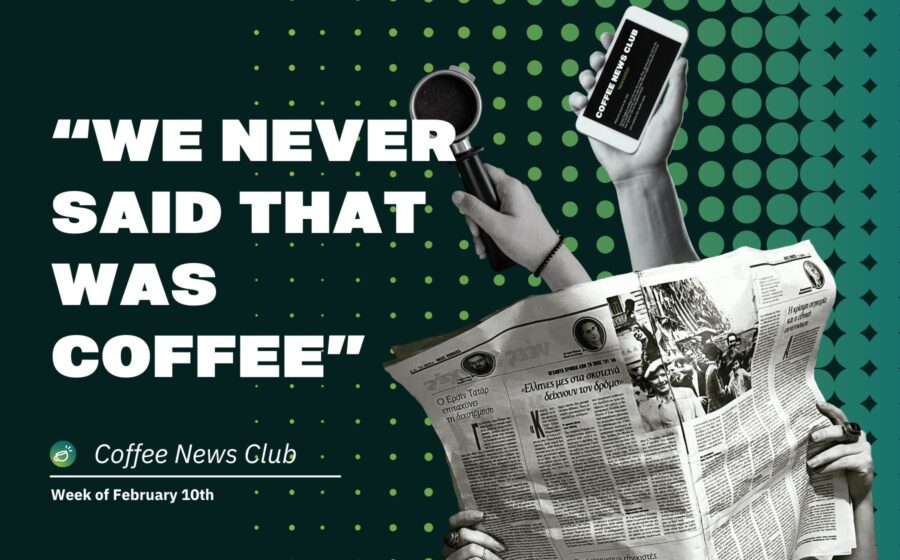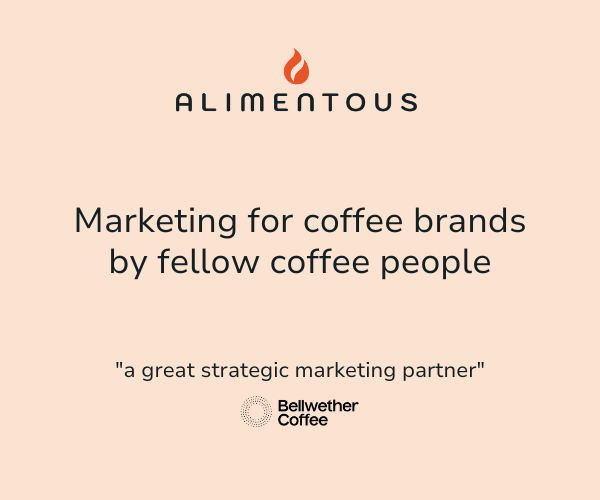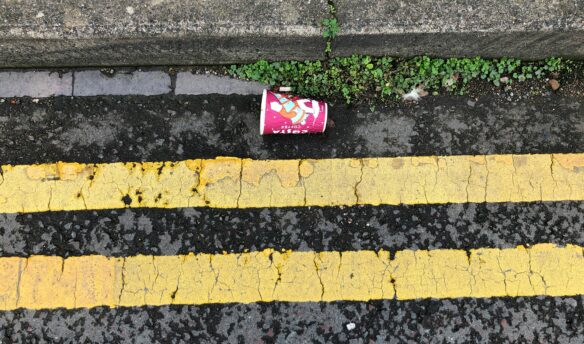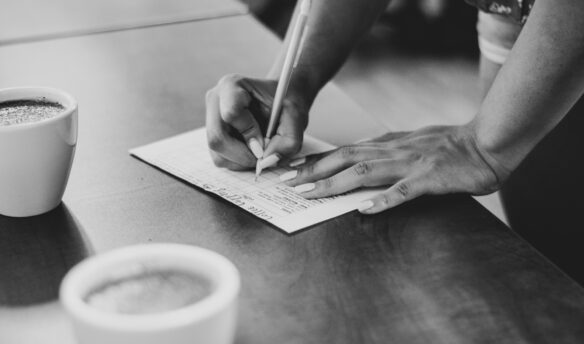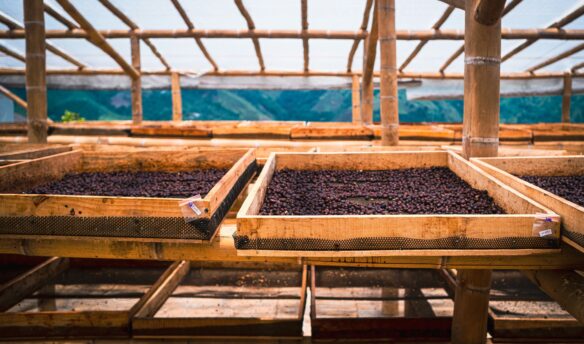One Canadiano, please: A Canadian roaster wants to rename the Americano. Plus, rising coffee prices make front-page news and drinking coffee is good for you—depending on what you add to it.
‘The Price Of Coffee On The Commodities Market Just Broke $4’ – via Sprudge
Since early 2024, coffee’s commodity price has risen over 100%. As of this writing, coffee is trading at $4 per pound, significantly higher than the previous record of $3.39 set in 1977 (adjusted for inflation, $3.39 in 1977 is closer to $17 today).
There are numerous reasons for this spike, from climate change-fueled weather patterns affecting crop yields to speculative trading from hedge funds to the recent threat of tariffs from the Trump administration.
As Zac Cadwalader writes for Sprudge, the upside to all this is that higher commodity prices tend to mean more income for farmers. “As of now, the chaos in the marketplace is an agent for good, at least as far as it pertains to coffee producers, who have historically gotten the short end of the stick in these matters.”
There are still a lot of questions to answer, and we don’t know yet what price spikes actually mean for farmers and the industry at large in the longer term—or how long these historic highs will last. We’ll stay on top of things and bring you all the news as it unfolds.
‘Rwanda’s Coffee Exports Poised for Recovery Amid Rising Prices’ – via The New Times
In Rwanda, farmers and other stakeholders hope that increasing the minimum farmgate price will lead to a rebound in export revenue.
As Emmanuel Ntirenganya reports for The New Times, export revenue fell by over 30% in the 2023/24 growing season. Export revenues, or the amount of money made by shipping coffee to buyers and roasters internationally, fell in part due to lower production volume as a result of climate change and aging coffee trees.
Rwanda’s National Agricultural Export Development Board (NAEB) raised the country’s minimum farmgate price, or the price farmers must be paid for coffee cherries when they leave the farm, by 25% in January. A country’s farmgate price can vary but is generally calculated based on local costs like fertilizer, currency exchange rates, and the international coffee futures market.
Fulgence Sebazungu, president of the Rwanda Coffee Cooperatives Federation, told Ntirenganya that farmers are happy with the increase. He noted that competition between buyers last year was fierce, which pushed them to pay above the previous farmgate minimum. “There is a high likelihood that the new set farm gate coffee price will be exceeded as well,” Sebazungu said.
According to NAEB, around 400,000 smallholder farmers in the country rely on coffee for their livelihoods. Oreste Baragahorana of the Coffee Exporters and Processors Association of Rwanda said that he hoped the increased price would encourage producers to continue investing in their farms. As we’ve seen across the industry, many Rwandan farmers are opting out of coffee growing because, Baragahorana said, “they were not getting high income from it.”
‘Brazil Roasters Fret Over Fake Coffee as Prices Soar’ – via Reuters
With coffee prices soaring (see stories above), some companies are looking for ways to cut costs and attract thrifty consumers.
In Brazil, some are selling “fake coffee,” which mimics grocery store ground beans but without any actual coffee.
According to reporting by Roberto Samora for Reuters, fake coffee “could contain coffee waste such as peels or leaves, other vegetable pulp and artificial coffee flavoring.”
Brazil’s coffee association, Associação Brasileira da Indústria de Café (ABIC), said it had identified multiple “fake coffee” products. They’ve alerted both the country’s health agencies and its agricultural ministry. “It is a clear attempt to fool consumers,” said Celirio Inacio da Silva, ABIC’s executive director.
One example of fraudulent beans is called Oficial do Brasil. Its packaging suggests that it’s just a regular bag of ground coffee—it even has a picture of a cup of coffee—but the small print notes that it’s made with “artificial coffee flavor.”
The company that produces Oficial do Brasil, Master Blends, said in a statement: “We never said it was coffee.”
This is not the only recent news story highlighting a growing trend of coffee substitutes and dilutions. Earlier this year, Bloomberg reported that roasters in Indonesia add ingredients like corn and nuts to blends to keep costs down. Cutting coffee beans with fillers is a trend that goes back a long time—wartime rationing and coffee shortages have often forced people to look for alternatives.
After the United States, Brazil is the world’s second-largest coffee consumer, and the retail cost of coffee in the country has increased by 37% over the past year, according to ABIC.
Samora reports that the “fake coffee” products sell for around one-third of the price of regular coffee. Master Blends defended its Oficial do Brasil “not coffee” blend, saying it was “meet[ing] the demand of a class of consumers that is suffering from high prices.”
‘Canadiano Replaces Americano: Inside B.C. Coffee Company’s ‘Quiet Rebellion’ Against Trump’ – via National Post
Kicking Horse Coffee in British Columbia wants other Canadian coffee companies to stop selling Americanos.
Instead, the coffee roaster and retailer is urging Canadian brands to change the name to “Canadianos,” a response to the nascent trade war between Canada and the United States.
Chief marketing officer Lori Hatcher-Hillier encouraged fellow Canadians to shed the Americano moniker. “Now, more than ever we need to stick together and wear our Canadian pride on our (coffee) sleeves,” Hatcher-Hillier said in a press release. Kicking Horse has sold what it calls a Canadiano—a shot of espresso in hot water, otherwise known as an Americano—since it opened in 2008.
Kicking Horse—bought by a private equity firm in 2012 and then sold to Lavazza in 2017—has provided a downloadable window display sign for others to use that reads “PROUDLY SERVING CANADIANOS: Sorry Americano. It’s Canadiano now.”
It’s all reminiscent of the “freedom fries” debacle from 2003 when several U.S. restaurants (and cafeterias in Congress) changed the name of French fries in response to France’s opposition to the Iraq war.
Kicking Horse says that a couple of cafes have already joined its “quiet rebellion.” Ryan Silverstein of Le Petit Pain, one of the cafes that has changed its Americano’s name, said, “It’s a simple switch, but it puts a little extra Canadian pride in every cup. We know our customers will love it, and honestly, it just feels right given everything that’s going on.”
More News
‘Brazil Rescued 200+ Coffee Workers from ‘Slave-Like’ Conditions in 2024’ – via Daily Coffee News
‘Chamberlain Coffee Opens A Cafe In Los Angeles’ – via Sprudge
‘Registration Open for World of Coffee 2025 in Geneva’ – via Communicafe
‘Japan’s % Arabica Signs Franchise Agreement for Iraq Launch’ – via World Coffee Portal
‘Vancouver’s Artigiano Acquires Organic Specialist Salt Spring Coffee’ – via Daily Coffee News
Is Coffee Good For You?
Drinking coffee can lower your risk of developing type 2 diabetes—but less so if you add sugar.
Researchers from Harvard University’s T.H. Chan School of Public Health looked at data from three separate studies that followed almost 290,000 people over 34 years, tracking coffee consumption as well as incidences of type 2 diabetes.
The study, published in The American Journal of Clinical Nutrition, found that those who drank coffee had a 10% lower risk of developing type 2 diabetes; this was the same whether they took it black or with milk. Those who added sugar saw a 5% reduction, while artificial sweeteners gave a 7% lower risk.
“Drinking coffee may help lower diabetes risk, but adding sugar or sweeteners significantly reduces these benefits,” said lead author Dr. Matthias Henn. “These differences in consumption patterns provided key insights into coffee’s potential health effects. To maximize coffee’s health effects, consider skipping sugar or any artificial sweetener.”
Beyond the Headlines
‘The Freezing of USAID is an Abject Disaster for the Global Coffee Sector’ by Nick Brown
‘Whispers From The Past: Ghost Signs, Walldogs, And Working Class Art In America’ by Jenn Chen



